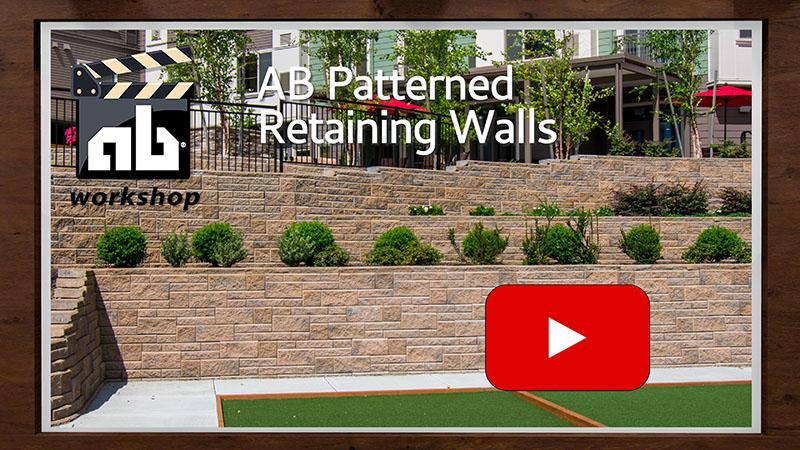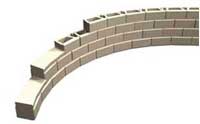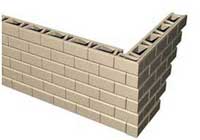Stepping Down Your Retaining Wall
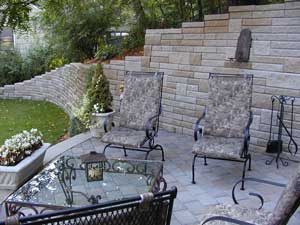
Patterned retaining wall with step downs
One of the unique benefits that sets Allan Block apart from other retaining wall systems is a great variety of options for ending and stepping down retaining walls. With Allan Block, you can turn retaining wall ends into the hillside with smooth flowing curves, corners or simple step downs. No other wall system gives you as many choices for finishing off your retaining wall project.
For AB, AB Aztec, & AB Europa Walls
- For a gradual step down, use the half-high blocks - AB Lite Stone, AB Aztec Lite Stone or AB Barcelona.
- For a full course step down, use the AB Corner Blocks from the AB, AB Aztec or AB Europa Collection or for AB Fieldstone see below for details.
- For a step down that doubles as a planter, turn the wall in 2 or 3 blocks after a corner.
- Create a soft ending to the wall by using an inside curve while stepping down.
See more options for finishing your retaining wall.
Retaining Wall Turn-ins
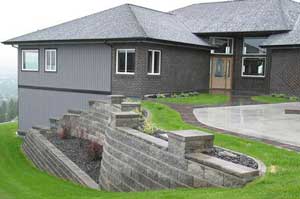
Retaining wall with turn-ins
The simplest and easiest method of ending an Allan Block retaining wall is to use smooth flowing curves that turn back into the hillside. The benefits of curving the retaining wall back into the hillside include:
- For a graceful, flowing end to the wall, curve the wall to create a plantable area that can soften the look of the retaining wall.
- For a natural flow into the landscape curve the wall back into the hillside. TIP: The benefits of curving the wall back into the hillside include:
- Less Time and Expense to Build
- No Need for Corner Blocks
- Superior Erosion Control
- Attractive Design
- For a dramatic end to the retaining wall, use a corner to turn the wall back into the hillside. See stepping up the base for information on stepping up the wall.
- TIP: Walls with ends that turn back into the hillside help prevent erosion behind the wall
Step Downs with AB Fieldstone
Creating a step down is similar to building an outside corner as it uses the same facing units that are manufactured with a textured side and has the same placement of the anchoring units.
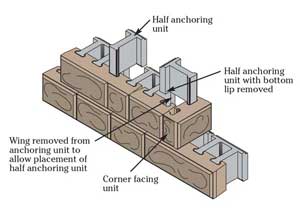
- Install the facing units up to the step down location. Install the facing unit with the textured end perpendicular to create a corner, with the textured face placed to face out.
- Split an anchoring unit in half. Take one half and remove the bottom lip and place in the facing unit that was used to create the step down. See modifying blocks for details on modifying an anchoring unit.
- The next anchoring unit will be installed in the first two facing units that lead up to the step down. This anchoring unit will span two facing units. One of the wings of this unit will need to be removed to allow placement.
- Use the other half of the previous anchoring unit in the next slot to get pattern back so each facing unit has its own anchoring unit.
- Use a flexible masonry adhesive to secure the corner units in place.
See more options for finishing your retaining wall.
Capping Step-Downs
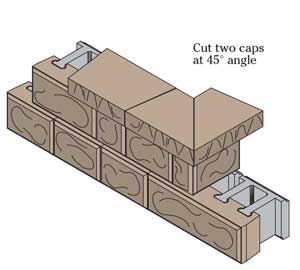
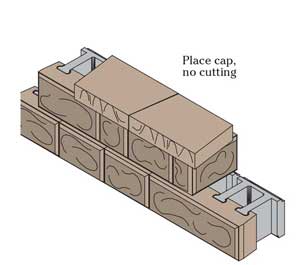
Capping for step downs can be done two different ways. Using the AB Fieldstone cap with and without cutting.
When placing caps on the wall, caps should be installed to overhang the front of the blocks. This accentuates the wall with a nice shadow line.


